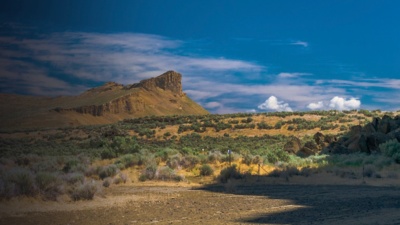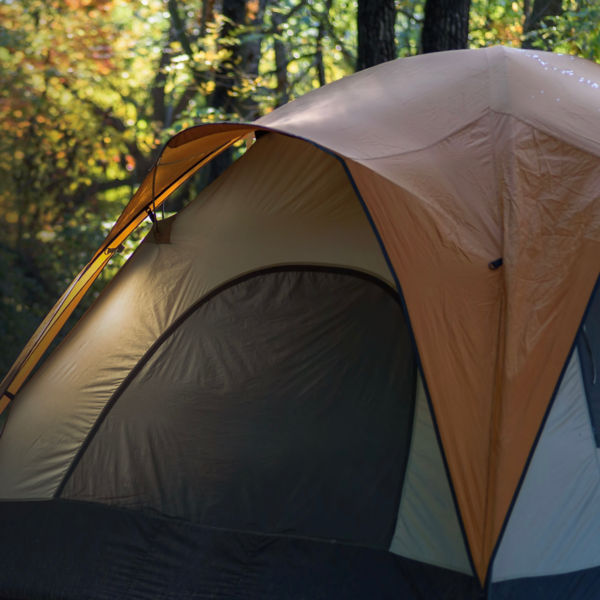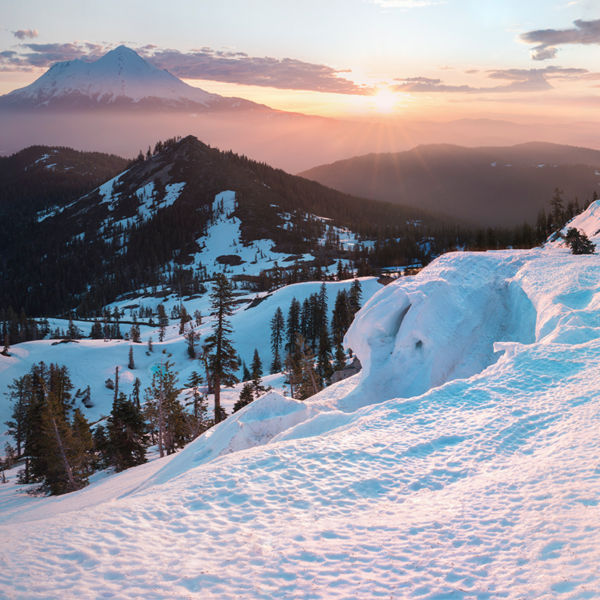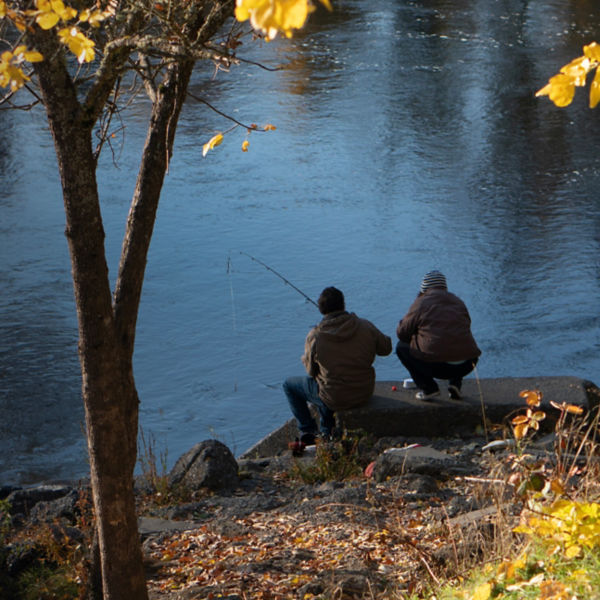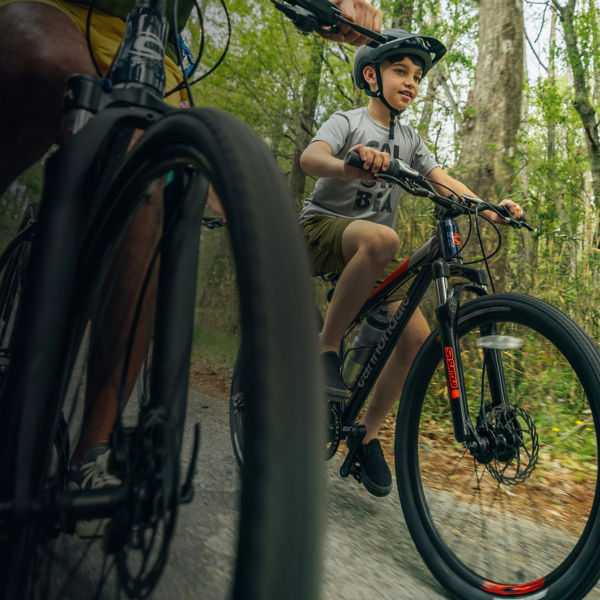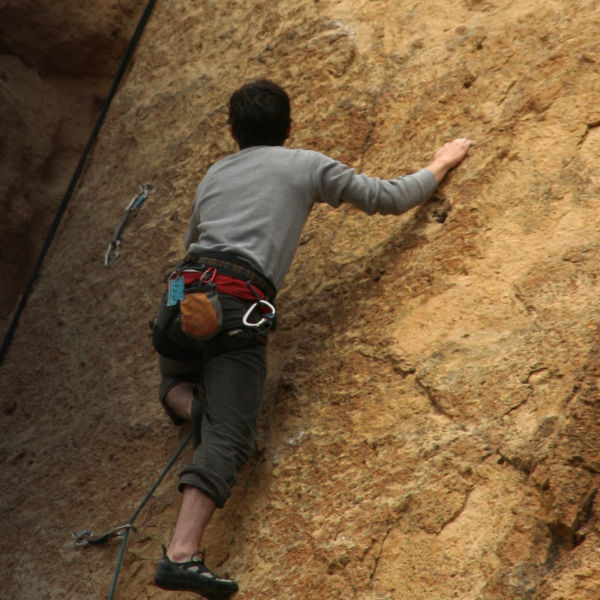Ways To Interact
While the tribes’ websites are a good place to start learning about their unique histories, getting outside to experience their traditional lands can provide more enriching ways to internalize their stories from the past, as well as to positively (and respectfully) interact with tribal lands and members today.
Dive Deeper into Local Landmarks
Learn the story behind some of the region’s defining geographical features. Just north of Medford, the Upper and Lower Table Rock mesas towering above the Rogue River were a refuge for the Takelma people during their bloody conflict with white settlers, which led to the Rogue River Wars (1855-1856). Upper Table Rock offers the shortest hike, rising 720 feet over 1.25 miles to the mesa summit. The Lower Table Rock hike (780 feet over 1.75 miles) provides some excellent historical signage about the area’s history, geology, and ecology. Save some energy to explore the tops of both mesas, where you’ll get superb views of the Takelmas’ homeland. They considered the two mesas sacred locations home to ancestral spirits. And when you hear the birds, feel the breeze and breathe the fresh air, it’s easy to understand why they so fiercely protected this region.
Target Regional Events
One way to interact with the tribes of Southern Oregon is to participate in select gatherings and celebrations like the Native American Arts Festival and Mother’s Day Pow-Wow. It’s held annually, every Mother’s Day Weekend in May at Riverside Park in Grants Pass (35 minutes west of Medford via Interstate 5). There’s traditional music and dance, as well as vendors who will teach you about crafts such as quilt making. There’s also an Indigenous People’s Day celebration at Southern Oregon University in Ashland. The Annual Salmon Bake is open to the public and led by tribal leaders. In addition to dancing and music, you’ll learn about tribal customs, land and food advocacy, habitat restoration, and educational opportunities.
Take an Active, Outdoor Tour
The free, recommended Modoc War audio tour is another immersive way to learn about the conflict between the Modoc people and U.S. Army. The self-guided tour starts at Fort Klamath (halfway between Upper Klamath Lake and Crater Lake National Park) and ends at the Lava Beds National Monument (40 miles south of Klamath Falls in Northern California). The downloadable audio tour is an hour long, but you can start and stop the recording so you have plenty of time to wander the different sites and exhibits. The 28-mile driving tour (along Oregon Route 39, which turns into California Route 139 at the states’ border) makes for an excellent cycling tour (56 miles round-trip, or drop off a car for a one-way shuttle).
From the Klamath County Museum in Fort Klamath to the Tule Lake Museum, you’ll gain insight into the Modoc War as well as more modern history; one of the country’s 10 Japanese-American Internment Camps operated in the area during World War II. You’ll stop at the Modoc’s traditional Lost River Territory, site of the first battle in the Modoc War, which occurred when a band of Modoc people left the Klamath Reservation and tried to return to their homeland along the Lost River. Enroute, the Modoc killed 18 settlers, spurring the U.S. Army to mobilize. Modoc Chief Kintpuash (aka Captain Jack) and 53 warriors held off more than 1,000 U.S. soldiers for seven months in the area of the present-day Lava Beds National Monument (where part of the monument is still named Captain Jack’s Stronghold in his honor, despite being hanged in 1873 for killing Gen. Edward Canby).
Learn More About Native American Culture
The Favell Museum in Klamath Falls offers great insight into the Native populations of the Upper Klamath Basin. You find more than 100,000 artifacts from Klamath County and beyond (some from South America), that help to tell the story of some 12,000 years of Indigenous history. Make a day of it with a stop at Klamath Lake.
Just 35 miles north of Klamath Falls is Fort Klamath, built in 1863—during the thick of the Civil War—to protect emigrants from the eastern U.S. who were traveling on the Applegate Trail (a southwest extension of the Oregon Trail). The fort originally included about 4,000 acres (3,000 of which were for growing hay for horses). A portion of the former grounds were turned into a museum in 1973. And beyond touring it (including the grave of Captain Jack), you can enjoy the quality fishing, birding and paddling opportunities on the nearby Wood River, or hop back on the Volcanic Legacy Scenic Byway leading to Crater Lake National Park.
Refresh & Refuel
The Seven Feathers Casino Resort is in Canyonville, an hour north of Medford on I-5. The massive 245,000-square-foot property is owned and operated by the Cow Creek Band. There are multiple restaurants (not to mention hotel lodging, RV hookups, gambling, a heated pool and spa amenities, including excellent hot stone massages for weary adventurers), but the K-Bar Restaurant stands out for its steaks, as does the Steelhead Lounge for hard-to-beat sushi. For a pick-me-up, stop at the Takelma Roasting Company for coffee and fresh pastries.

